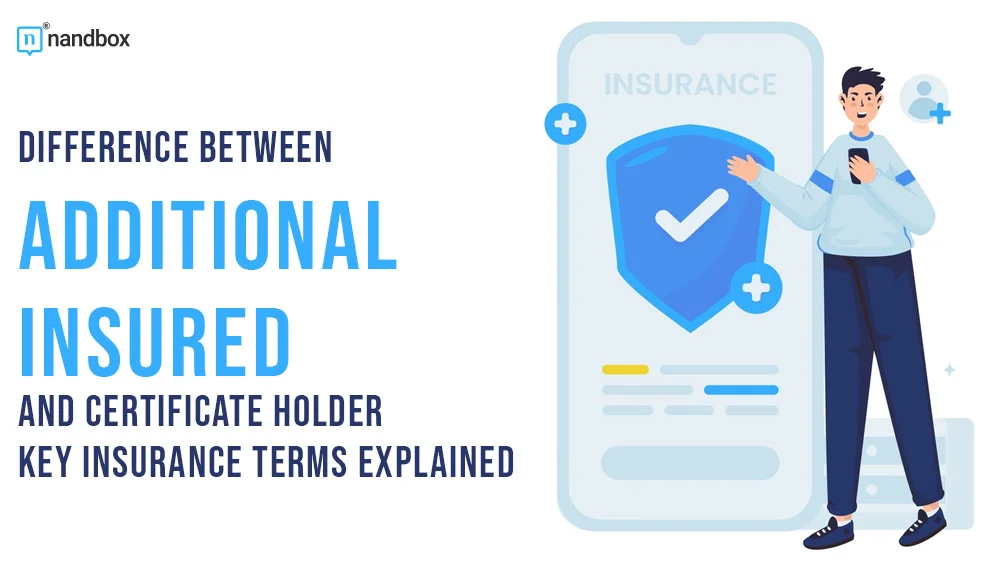Insurance paperwork can be confusing. I want to clear up the difference between two important terms: additional insured and certificate holder. These roles are often mixed up, but they’re not the same thing.
An additional insured gets coverage under someone else’s insurance policy, while a certificate holder just gets proof that insurance exists. This means an additional insured can make claims on the policy, but a certificate holder can’t. It’s a big difference that matters in business deals and contracts.
I’ll explain more about how these roles work in practice. Knowing the difference can help you make smart choices about insurance for your business or projects. It’s key info for anyone dealing with contracts or liability issues.
Key Takeaways
- Additional insureds have coverage rights, certificate holders don’t
- Businesses often need to know which role they have in contracts
- Understanding these terms helps manage risk and legal responsibilities
Streamlining Operations With Back-Office Support
Before diving into defining key terms like additional insured and certificate holder, it’s worth noting how insurance back office services simplify managing these concepts. By delegating these tasks to experienced teams, businesses can improve efficiency and focus on the core activities. This article delves into a key aspect of insurance knowledge: the difference between additional insured and certificate holder—concepts that back-office support teams often help clarify and manage. That said, let’s start going into details part by part.
Understanding Insurance Basics
Insurance can be confusing. I’ll explain some key terms and how policies are set up. This will help you grasp the difference between additional insureds and certificate holders.
Defining Insurance Terms
An insurance policy is a contract between you and an insurance company. Also, it spells out what’s covered and for how much. I find it helpful to think of it as a safety net for unexpected events.
A certificate of insurance proves you have coverage. It’s like a receipt that shows your policy details. Many businesses ask for this to verify you’re insured.
Insurance coverage refers to the specific protections in your policy. Also, this can include things like property damage or liability.
Insurance Policy Structure
Policies have several parts. The declarations page lists who’s insured, what’s covered, and the policy limits. I always check this first. The insurance agreement outlines what the insurance company will do for you. It’s the heart of the policy. Conditions explain your responsibilities and the insurer’s rights. I make sure to read these carefully. Exclusions list what’s not covered. It’s crucial to understand these to avoid surprises. Endorsements can add or change coverage. They’re how policies are customized to fit specific needs.
Roles in the Insurance Contract
Insurance contracts involve different parties with specific roles and responsibilities. Let’s look at how the named insured, additional insured, and certificate holder fit into the picture.
Role of the Named Insured
I’m the named insured on my policy. This means I’m the primary policyholder. I pay the premiums and have the most rights under the contract. I can make changes to the policy, file claims, and receive payouts.
My insurance protects me from financial losses. If someone sues me, my policy covers legal costs and damages up to the limits. I’m responsible for meeting all policy conditions, like paying on time and reporting claims promptly.
As the named insured, I can add other parties as additional insureds if needed for business reasons.
Role of the Additional Insured
When I add someone as an additional insured, I’m extending some of my policy’s protection to them. This is common in business relationships. For example, if I’m a contractor, my client might ask to be an additional insured on my liability policy.
Additional insureds can file claims directly under my policy for covered losses. They have some, but not all, of the rights I have as the named insured. They can’t change the policy or cancel it.
The coverage for additional insureds is usually limited to specific activities or locations related to our business relationship.
Role of the Certificate Holder
I might list someone as a certificate holder on my Certificate of Insurance (COI). Furthermore, this doesn’t give them any coverage under my policy. It simply proves to them that I have insurance.
Certificate holders can’t file claims or make changes to my policy. Additionally, their role is purely informational. For example, if I’m renting a space, the landlord might want to be a certificate holder to verify my coverage.
The COI shows key policy details like coverage types, limits, and dates. If my policy changes or cancels, the certificate holder might get notified, depending on the terms.
Practical Implications in Business
The concepts of additional insured and certificate holder have real-world effects on business relationships and contracts. Also, they impact how companies manage risk and verify insurance coverage.
Additional Insured in Contracts
I’ve seen many contracts require one party to add the other as an additional insured. This protects the added party under the first company’s insurance policy. For example, a building owner might ask a contractor to name them as an additional insured. This gives the owner coverage under the contractor’s policy for issues related to the work.
Adding someone as an additional insured can be done in different ways:
- Endorsement to the policy
- Blanket additional insured clause
- Automatic additional insured provision
These methods vary in cost and flexibility. Also, the right choice depends on the specific business needs and relationship.
The Purpose of Proof of Insurance
I know that proof of insurance is crucial in business deals. Also, it shows that a company has the required coverage. This proof often comes in the form of a certificate of insurance (COI).
A COI lists:
- Types of coverage
- Policy limits
- Effective dates
Many businesses ask to be named as certificate holders. Moreover, this means they’ll get updates if the policy changes or is canceled. It’s a way to verify ongoing coverage without being added to the policy.
Proof of insurance helps manage risk in business relationships. It’s common in situations like:
- Hiring contractors
- Leasing property
- Signing vendor agreements
Insurance Endorsements and Limitations
Insurance policies can be modified through endorsements and have specific coverage limits. Also, these factors play a key role in shaping the protection provided to policyholders and additional insureds.
Understanding Endorsements
An endorsement changes an insurance policy. It can add, remove, or modify coverage. The additional insured endorsement is a common type. It extends coverage to another party besides the policyholder.
I’ve seen many cases where clients request to be added as additional insureds. Also, this gives them some protection under the policy. The endorsement spells out what coverage they receive.
Not all endorsements are the same. Some offer broad protection, while others are more limited. It’s crucial to read the endorsement carefully to know exactly what it covers.
Comparing Coverage Limits
Coverage limits set the maximum amount an insurer will pay for a claim. Also, these limits apply to both the policyholder and any additional insureds.
I always advise checking the policy limits. They can vary widely between policies. Some common limits are:
- Per occurrence limit
- Aggregate limit
- Personal injury limit
Additional insureds share these limits with the policyholder. Furthermore, this means claims by additional insureds can reduce the available coverage for the policyholder.
It’s important to make sure the limits are high enough for all parties’ needs. In some cases, higher limits may be necessary to meet contractual requirements.





